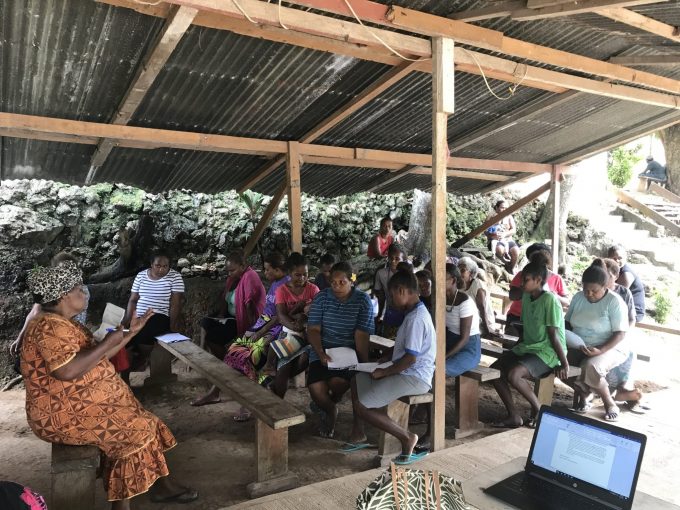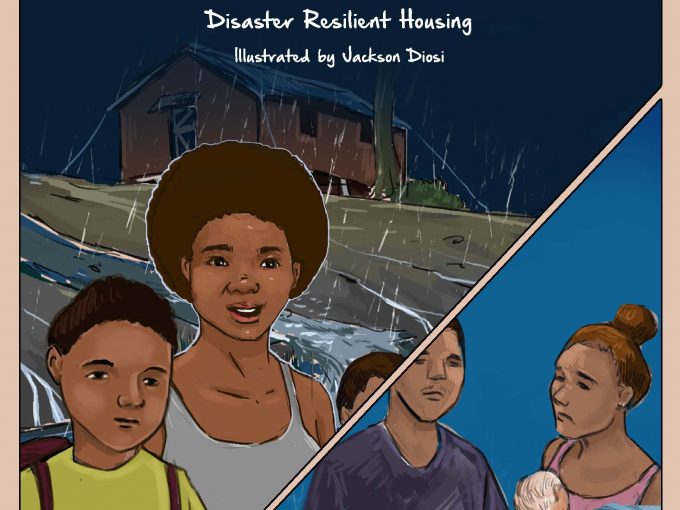To ensure that shelters in informal settlements across the Pacific Island region are disaster resilient, policymakers and relief agencies must work closely with local communities to implement sustainable solutions, Darryn McEvoy, Mittul Vahanvati, Deb Kuh, and Usha Iyer-Raniga write.
Towns and cities in the Pacific are facing the complex challenges of climate change and rapid urbanisation. These issues are interlinked, as rapid urbanisation pressures often leads to the growth of informal settlements and the creation of new climate vulnerabilities.
Indeed, the Cities, Settlements and Key Infrastructure chapter of the recently released Intergovernmental Panel on Climate Change Sixth Assessment Report highlights that the growth of vulnerabilities is greatest in urban informal settlements, and that ‘the greatest gains in wellbeing in urban areas can be achieved by prioritising investment to reduce climate risk for low-income and marginalised residents and targeting informal settlements’.
New settlements are frequently more at risk of, and less able to adapt to, climate-related hazards. Factors contributing to the increased climate vulnerability of informal settlements include housing being located in high-risk areas, poor quality structures, limited access to basic services, and insecurity of land tenure.
Addressing the specific shelter needs of five vulnerable informal settlements in Honiara, Solomon Islands, the authors of this piece developed a shelter guide in collaboration with local partners. The guide, funded by the Disaster Ready Program as part of the Australian Humanitarian Partnership, explores the experiences of Honiara’s urban poor, provides support in finding post-disaster shelter, and offers a number of recommendations for policymakers that can be applied throughout the Pacific.
Local experience shows that shelter recovery efforts after a disaster will often be carried out by community residents themselves. This is largely out of necessity, but in many instances it also represents pride in local carpentry skills as well as the presence of traditional knowledge and practice.
It is, therefore, crucial to help provide technical knowledge and principles that are culturally and climatically responsive to assist local efforts during preparation, response, and longer-term recovery.
One example of this is the ‘tie down from the bottom up’ approach, where structural features to strengthen resilience are targeted from the ground up. This process starts with anchored footings, then ties, straps, and bracings to secure different parts of the structural frame to each other.
However, it is important to remember that technical knowledge can only act as one part of the solution. Without additional financial and material support, urban poor in the Pacific will find preparation and recovery challenging.
Additionally, ‘incremental housing’ – where residents are only able to add to their houses as and when adequate resources become available – is a common reality in informal settlements that policymakers must recognise.
This means that for those aiming to provide housing after a disaster, there should be a focus on each dwelling having at least one room or minimum space which is strengthened for resilience to multiple hazards, known as a ‘core space’. Ideally, the core space arrangements would cater for eating and sleeping, as well as having access to sanitation services that are both safe and dignified.
The use of suitable local materials rather than imports is also key, as these are more easily available, cheaper, sustainable, and their use contributes to the local economy. As an extension of this, responders should also prioritise materials and tools that local people are familiar with and can therefore more easily maintain and self-repair.
Finally, in governance terms, there must be collaboration between officials, organisations, and local communities. In the context of Solomon Islands, this means the National Disaster Management Office, the shelter sub-committee run the Ministry of Infrastructure and Development and Solomon Islands Red Cross, and provincial disaster officers all have critical roles to play in responding shelter needs post-disaster.
Unfortunately, there is often a disconnect between informal settlements and the shelter response community. As such, improved lines of communication and collaboration between communities and officials would go a long way to ensuring housing solutions are responsive to residents’ needs. The presence of community ‘disaster committees’ at the local level to prepare for, and respond to, emergencies and long-term recovery is also critical in this regard.
Facing the twin challenges of climate change and rapid urbanisation, effective policy responses are critical to protect those most at risk in the Pacific Island region. Governments and relief agencies must work closely with local communities to ensure disaster resilient shelter is available and appropriate for these communities’ needs.
Republished from the Asia and the Pacific Policy Society’s Policy Forum under a Creative Commons Licence.





